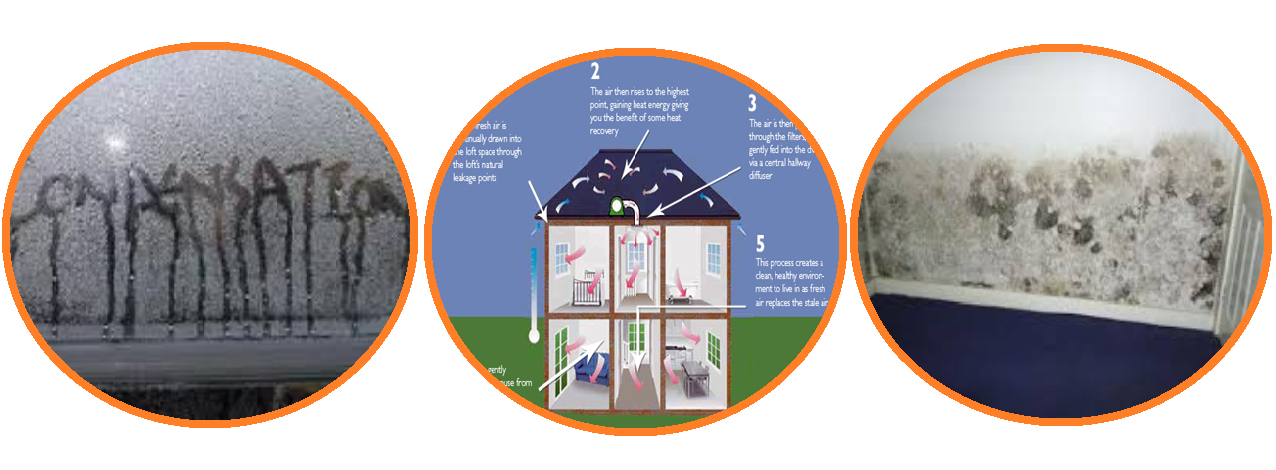Condensation is a prevalent issue that can trouble any home, occasionally causing inconvenience or escalating into more significant problems, such as dampness and mould. This occurs when surplus moisture in the air encounters cold surfaces, such as windows.
Effectively managing condensation necessitates optimising airflow to prevent moisture from settling. Even with proper ventilation, there are additional steps to take in maintaining control and averting potential issues.
Arrange a home survey with expert damp proofers today.
What is condensation?
Condensation is formed when warm, moist air cools rapidly, like when it encounters a chilly window.
The connection between condensation and humidity lies in the air's capacity to hold water vapour. Warmer air can retain more moisture. When air reaches its saturation point and can't hold any more water vapour at a given temperature, it reaches 100% humidity.
If the air cools down, it can no longer contain that level of moisture, leading to the formation of droplets. This is the process by which condensation occurs.
What causes condensation in my house?
To understand why condensation occurs in your home, pinpoint the activities that boost humidity and trigger condensation, such as:
- Boiling liquids during cooking
- Ironing with steam or on damp clothes
- Indoor clothes drying
- Wet/dry vacuum cleaning and floor washing
- Tumble drying without proper ventilation
- Showering or bathing
- Decorating, like wallpaper stripping with water
- Plumbing leaks, such as from washing machines
Typically, a family of four generates up to 13 litres of water vapour daily through these activities. To mitigate condensation, it's essential to expel the moisture-laden air from your property once you identify its sources.

Common signs of condensation at home
- Water collecting on the inside of windows or the windowsill
- Water collecting on non-absorbent surfaces like tiles
- Black mould growth on walls and skirting
- Rotting and peeling off wallpaper
- Mould growing on clothes and other fabrics
- A strong musty smell
Why is condensation worse during winter?
Condensation tends to be more prevalent as autumn transitions into winter due to colder windows and walls cooling indoor warm air faster.
However, the extent of condensation can vary significantly between homes heated to 24°C with 60% humidity. Efficient double-glazing and insulation can prevent condensation entirely, while homes with single-glazed windows and inadequate insulation will likely experience more condensation.
Controlling condensation around your home
The level of condensation you experience within your home is temperature dependent. Warmer air can retain more moisture, explaining why condensation often surfaces on colder surfaces and during chillier seasons when windows are sealed, reducing natural ventilation.
Swiftly expelling moisture-laden air from these spaces minimises the potential for condensation to manifest in other areas of your home. In your home, the key sources of moisture are typically:
- Kitchen
- Bathrooms
- Ensuite
- Water closet
- Utility Room
Our expert approach to condensation treatment
When tackling condensation issues, we primarily focus on improving ventilation and heating while reducing indoor moisture production. Enhancing these aspects typically results in better conditions. However, opening windows might not always be feasible due to noise or security concerns.
Some situations demand more comprehensive solutions, particularly when the building's structure is the root cause. This often occurs in bungalows and ground-floor flats. Houses affected by rising or penetrating dampness can also experience increased condensation due to moisture evaporating from damp walls.
In such cases, we recommend the Positive Pressure Ventilation System. This system increases air pressure within the house using fresh, clean air, effectively pushing out stale air. Additionally, our surveyors will guide you on supplementary measures to create a dry, healthy home.
Ventilation solutions and anti-condensation products
Our primary recommendation for condensation issues is the Positive Pressure Ventilation System, which enhances ventilation within the home by introducing fresh air and expelling stale air. In addition, we offer guidance on other measures to ensure a healthier living environment.
Benefits of optimal indoor humidity and moisture control
Achieving optimal indoor humidity and moisture control is crucial for maintaining a comfortable, healthy home. By implementing measures like the Positive Pressure Ventilation System and addressing the root causes of condensation, you can enjoy a dry, well-ventilated living space with reduced condensation-related issues.
For more information on how you can tackle condensation in your home, contact Alliance today – your professional damp proofer in Scotland.






